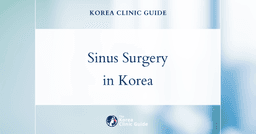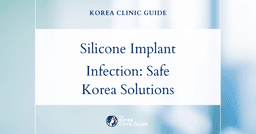Rhinitis Surgery
Description
Rhinitis surgery, often aimed at alleviating chronic nasal congestion and improving airflow, typically begins with a thorough preoperative assessment. This includes a detailed medical history, physical examination, and often imaging studies like CT scans to evaluate the nasal structures. On the day of the surgery, the patient is prepared and anesthetized, either through general anesthesia or local anesthesia with sedation depending on the extent of the procedure and patient preference. The surgical area is cleaned and prepped, and an endoscope is usually inserted into the nasal cavity to provide a clear view of the internal structures. The surgeon then uses specialized instruments to correct the underlying issues causing rhinitis. This can involve several techniques, such as turbinate reduction to shrink swollen nasal turbinates, septoplasty to straighten a deviated septum, or other methods to remove polyps or other obstructions. Throughout the procedure, the surgeon takes care to minimize trauma to the surrounding tissues to reduce postoperative discomfort and complications. Once the anatomical corrections have been made, the nasal cavity is often packed with gauze or a similar material to control bleeding and support the newly positioned tissues. The endoscope is removed, and any external incisions, if made, are closed with sutures. Postoperatively, patients are monitored closely as the anesthesia wears off. Pain management, antibiotics, and decongestants may be prescribed to aid healing and prevent infection. Follow-up appointments are scheduled to monitor recovery, remove any packing materials, and assess the success of the surgery in resolving the symptoms of rhinitis.
Ailments treated by this procedure: Vasomotor Rhinitis, Seasonal Allergies Nose, Nasal Drainage, Perennial Rhinitis, Smoker’s Rhinitis, Chronic Nasal Congestion, Hypertrophic Turbinates, Allergic Rhinitis, Concha Bullosa, Nonallergic Rhinitis, and Inferior Turbinate Hypertrophy
Search
Categories
Related Posts




Top Rhinitis Surgery Clinics
THEPLUS Plastic Surgery
Sinsa Station
Free consultation from the clinic
THE PLUS Plastic Surgery clinic, nestled in the bustling Garosu-gil area of Gangnam, Seoul, epitomizes the pinnacle of world-class plastic surgery. The clinic spans four floors specifically designed to accommodate a full spectrum of services, from initial consultation through surgery and post-operative skincare. Surgeons at THE PLUS are not only practitioners but also eminent medical researchers, regularly contributing to scholarly journals and books that echo their clinical prowess. Their participation in numerous domestic and international medical symposiums showcases their commitment to staying at the forefront of cosmetic surgery advancements. This dedication to excellence and personalized patient communication is at the core of their philosophy, ensuring a superior level of medical service. Distinguished for their expertise in a range of procedures, THE PLUS Plastic Surgery specializes in rhinoplasty, revision rhinoplasty, facial contouring, with their extensive experience in rhinoplasty earning them a preeminent reputation. The clinic's director doctors, Dr. Jeong Jae Yong and Dr. Kim Taek Kyun, are venerated figures in the plastic surgery industry, recognized both in Korea and internationally for their work. Their ongoing pursuit of knowledge through webinars, despite global challenges like the COVID-19 pandemic, underscores their dedication to the continuous advancement of the plastic surgery field. Through their educational outreach, they strive to elevate the industry standard and share their expansive expertise with fellow surgeons. Safety and patient satisfaction are the cornerstones of THE PLUS Plastic Surgery, facilitated by a team of highly experienced professionals exceeding a decade in practice. With active participation in academic research and various medical societies, including the American Society of Plastic Surgeons, the clinic's surgeons are widely sought after for presentations and live surgeries around the globe. Both Dr. Kim, an authority in rhinoplasty and facial bone surgery, and Dr. Jeong, a specialist in rhinoplasty revisions, have authored significant contributions to the field, with Dr. Kim's seminal work, "Rebuilding Nose," serving as an essential reference for rhinoplasty professionals. For anyone considering advanced cosmetic procedures, especially revision rhinoplasty, THE PLUS Plastic Surgery stands as a highly recommended choice, promising exceptional results through the hands of skilled, esteemed surgeons. At THE PLUS in Gangnam, various cosmetic and dermatological procedures are offered, including: Face Contouring: Full Face Contouring: A comprehensive approach to reshape and balance the facial structure for a more harmonious appearance. Cheekbone Surgery: Surgical reduction or reshaping of the cheekbones to enhance facial proportions. Square Jaw Surgery: A procedure aimed at softening an overly pronounced square jawline for a more feminine or softer appearance. Vline Surgery: Refines the jawline and chin to create a sleeker, more V-shaped facial contour. Facial Implant: The placement of implants in areas like the chin, cheeks, or jaw to add volume and definition. Rhinoplasty: Low Nose: Elevating the bridge of the nose to enhance facial balance. Short Nose: Lengthening procedures to address a nose that appears too short for the face. Droopy Nose: Correcting a downward-tilting nasal tip to achieve a more aesthetically pleasing angle. Hawk Nose: Smoothing out a prominent nasal bridge, often referred to as a "Roman nose." Deviated Nose and Septal Deviation: Correcting the nasal septum and external nose for improved aesthetics and function. Big Nose: Reducing the overall size to better fit facial proportions. Bulbous Nose: Refining the tip of the nose to a more defined shape. Wide Nose Alar Reduction: Narrowing the width of the nose through alar base reduction techniques. Men’s Nose Contour: Tailored rhinoplasty focusing on masculine aesthetic goals. Nostril & Nasal Wing (Alar Retraction) Correction: Adjusting the nostrils and sides of the nose for symmetry and proportion. Open & Closed Method: Techniques for rhinoplasty, either with external incision (open) or internal incisions (closed). Rhinitis & Sinusitis: Surgical and non-surgical options to treat nasal inflammation and sinus conditions. Non-Implant Rhinoplasty: Rhinoplasty without the use of synthetic implants, possibly using the patient's own tissue. Implant Rhinoplasty: Using synthetic or biological implants to enhance the nasal structure. Breast Surgery: Breast Implant: Enhancement of breast size and shape using implants. Motiva Breast Implant: Utilizing Motiva implants, known for their safety and natural feel. Eye Surgery: Double Eyelid Surgery: Creating a crease in the eyelid where one does not naturally exist to open up the eye appearance. Ptosis Correction: Surgical repair of drooping eyelids for improved vision and aesthetics. Canthoplasty: Reshaping the outer corner of the eye, often for a more almond-shaped appearance. Blepharoplasty: Removing excess skin, muscle, and sometimes fat from the eyelids to rejuvenate eye appearance. Face Lift: Face Lift: Surgical procedure to lift and tighten facial tissues for a more youthful appearance. Thread Lift: A minimally invasive procedure using threads to lift and tighten the skin. Face Fat Grafting: Transferring fat from one part of the body to the face to restore lost volume. Dermatology: Fillers: Injectable treatments to restore volume and smooth out wrinkles or folds. Botox: Injections that relax facial muscles to reduce the appearance of lines and wrinkles. Pigmentation: Treatments to address skin discoloration issues such as freckles, age spots, and melasma. Acne Scar Treatment: Various procedures to reduce the appearance of scars left by acne. Whitening: Treatments aimed at lightening the skin for a more even complexion. O2toderm Skin Care: A specific skin care treatment that uses oxygen for rejuvenating effects. Duo Skin Lifting: A treatment combining two modalities to achieve tighter, more youthful-looking skin. Liposuction: A surgical procedure that removes excess fat from specific areas of the body, aiming to reshape and contour the figure.
learn more
Made Young Plastic Surgery
Gangnam Station
Free consultation from the clinic
Made Young Plastic Surgery Clinic, nestled in the heart of Seoul's prestigious Gangnam district, epitomizes the pinnacle of rejuvenative and aesthetic excellence in the field of plastic surgery. With a firm commitment to safety as its guiding principle, Made Young is a beacon of hope for those seeking to turn back the clock on their appearance. The clinic stands out not just for its unwavering dedication to the highest standards of patient care and safety, but also for its innovative approach that marries traditional beauty ideals with cutting-edge techniques. Face Lift Procedures: Face Lift: A surgical procedure to reduce signs of aging by removing excess skin and tightening the underlying tissues of the face. Double Chin Lift: Targets and reduces the appearance of a double chin through liposuction or surgery for a more defined jawline. Neck Lift: Eliminates loose skin and excess fat in the neck area, providing a smoother, more youthful neckline. Forehead Lift: Also known as a brow lift, this surgery raises the brows and reduces wrinkles and sagging skin on the forehead. Sub-Brow Lift: A more focused lift that targets the area just above the eyebrow to elevate and smooth the upper eyelid. Face Contouring: Cheekbone Reduction: Surgically reduces the size of the cheekbones to create a more harmonious facial structure. Metal Free Cheekbone Reduction: A technique that reduces the cheekbone without the use of metal fixtures, providing a natural post-recovery contour. Metal Free-V-Line Surgery: A surgical approach to sculpt a slimmer jawline and chin without metal implants, emphasizing a V-shaped face. V-Line Surgery: Reshapes the jawline to achieve a more aesthetically pleasing V-line shape of the face. Chin Surgery (Genioplasty): A surgical procedure to enhance or reduce the size and shape of the chin for better facial proportion. Jaw Reduction Surgery: Surgically reduces the width of the jaw for a more refined facial silhouette. Non-Invasive Lifting: Non-Invasive Lifting: Utilizes techniques that do not require surgery to lift and firm the skin. V-Line Lifting: Focuses on achieving a V-shaped face through non-surgical methods like fillers or ultrasound. Forehead Lifting: A non-surgical option to lift and tighten the forehead area, often using fillers or threads. Thread Lift: Uses temporary, dissolvable threads to lift and tighten the skin for a more youthful appearance. Men’s Thread Lift: Specifically designed for male patients, this procedure lifts and firms the skin using threads. Skin Booster: Hydrates and rejuvenates the skin using micro-injections of hyaluronic acid and other revitalizing substances. Shurink: Uses focused ultrasound energy to lift and tighten the skin non-surgically. Ultherapy: A non-invasive procedure that uses ultrasound technology to stimulate collagen production and tighten skin. Rhinoplasty: Rhinoplasty: Surgically reshapes the nose for cosmetic or functional improvements. Revision Rhinoplasty: Corrective nasal surgery for individuals unsatisfied with the results of a previous rhinoplasty. Reconstruction Rhinoplasty: Rebuilds the structure of the nose often after injury or for congenital defects. Rhinoplasty Implant Removal: The removal of previously inserted implants from the nose due to complications or for revision purposes. Eye Surgery: Double Eyelid Surgery (Non-Incisional): Creates a crease in the eyelids without cutting, often using sutures for a double eyelid appearance. Double Eyelid Surgery (Incisional): Forms a permanent eyelid crease through a surgical incision, allowing for the removal or rearrangement of tissue. Ptosis Correction: Repairs drooping eyelids by tightening the muscle that lifts the eyelid. Upper Blepharoplasty: Removes excess skin and fat from the upper eyelids, improving field of vision and aesthetic appearance. Lower Blepharoplasty: Targets under-eye bags by removing or repositioning fat in the lower eyelids and can include skin tightening. Canthoplasty: A surgical procedure to lift or reshape the eye by altering the outer corner of the eyelid. Dark Circle Removal: Reduces the appearance of dark circles under the eyes through various methods, including fillers, fat repositioning, or laser treatments. At its core, Made Young is driven by a team of highly experienced plastic surgeons, anesthesiologists, and medical staff who are not just experts in their field but are also deeply committed to the wellbeing of their patients. Offering a wide range of specialized procedures from facial contouring to non-invasive lifting and rhinoplasty, each treatment is tailored to meet the unique needs and aspirations of every individual. Made Young doesn’t just aspire to alter appearances; it strives to imbue patients with a renewed sense of confidence and vigor, ensuring they leave with not just physical transformations but a deeply rooted sense of satisfaction and well-being.
learn more
Okay Plastic Surgery Clinic
Cheongdam, Gangnam-gu Office, Apgujeong Rodeo Station
Free consultation from the clinic
At Okay Plastic Surgery Clinic, we believe in a transformative approach to aesthetic care that goes beyond simple procedures. Our commitment is rooted in sincerity, precision, and individualized treatment, ensuring that each patient receives a tailored solution that truly meets their unique needs and aspirations. Led by a team of specialized professionals, including a renowned female plastic surgeon with extensive experience, we offer more than just medical procedures. We provide a comprehensive journey of personal transformation, guided by expertise, empathy, and cutting-edge medical techniques. Our clinic offers an extensive range of specialized aesthetic services, meticulously designed to address diverse patient needs: Body Contouring: Sculpt and redefine your body with our advanced contouring techniques: Liposuction: Removal of excess body fat to reshape specific areas. Line Fat: Specialized treatment for defining body lines. Fat Grafting: Transferring fat to areas needing volume enhancement. Contouring Treatment: Techniques to sculpt and enhance the body's shape. Abdominal/Arm Lift: Removing excess skin and fat for a firmer, more toned appearance. Breast Augmentation Center: Comprehensive solutions for breast-related concerns: Breast Augmentation: Enhancing breast size and shape with implants or fat grafting. Breast Reduction Surgery: Reducing the size of breasts to alleviate discomfort and achieve a desired aesthetic. Saggy Breast Surgery: Lifting and reshaping to address breast sagging. Floating Room/Inverted Nipple: Corrective procedures for inverted nipples or related conditions. Gynecomastia (Gynecomastia): Male breast reduction to treat enlarged breast tissue. Hairline Center: Precision techniques for hairline and forehead aesthetic refinement Hairline Correction: Adjusting the hairline for a more desired shape and contour. Hair Transplant: Restoring hair growth in areas affected by thinning or baldness. Forehead Reduction: Reducing the forehead size for proportional facial aesthetics. Lifting: Advanced facial rejuvenation and skin tightening solutions Face Lift Surgery: Comprehensive tightening and lifting of facial tissues for a rejuvenated appearance. Mini Lift Surgery: Targeted lifting procedure for less extensive rejuvenation needs. Endoscopic Forehead Lift Surgery: Minimally invasive technique to lift and smooth the forehead area. Thread Lifting: Non-surgical method using threads to lift and firm the skin. Laser Lifting: Utilizing laser technology to tighten and lift the skin non-surgically. Eye Plastic Surgery: Specialized procedures for eye area enhancement and correction. Double Eyelid/Eye Correction: Creating or correcting double eyelids and addressing other eye shape concerns. Ectopic Surgery: Corrective procedure for misaligned eyes. Under Eye Surgery: Treatments for under-eye bags, circles, or sagging. Middle Aged Eye Surgery: Procedures tailored to address aging-related changes in the eye area. Revision: Corrective surgeries for previous eye procedures. Rhinoplasty: Comprehensive nose reshaping and refinement techniques. Nose Tip Surgery: Refining the shape of the nose tip. Nose Bridge Surgery: Enhancing or reducing the nasal bridge. Nostril Reduction: Reducing the size of the nostrils for balance and symmetry. Revision: Correcting or improving the outcomes of prior nose surgeries. Special Clinic: Innovative treatments for scar management and specialized skin concerns. Scar Clinic: Treatment options for various types of scars. Keloid Clinic: Specialized treatment for keloid scars. Benign Tumor Clinic: Removal and treatment of benign skin growths. Stem Cell Clinic: Cutting-edge treatments involving stem cells. Scar Keloid Review: Evaluation and treatment planning for scars and keloids. Petit/Skincare: Tailored solutions for skin health and aesthetic enhancement. Pigmentation/Whitening: Treatments targeting skin discoloration and aiming for a brighter complexion. Pores/Acne/Scars: Solutions for addressing pore size, acne, and acne scars. Botox/Filler: Injectable treatments for wrinkles, volume loss, and facial contouring. Medical Skin Care: Professional skincare services for maintaining skin health and appearance.
learn more
Banobagi Plastic Surgery
Yeoksam Station
Free consultation from the clinic
Banobagi Plastic Surgery was first established in February 2000 by four medical professionals who are specialists in plastic surgery from Seoul National University Hospital, based on the artisan spirit for beauty, to create a hospital that is loved by patients, a hospital with a warm medical philosophy and good surgical skills, and a hospital that is recognized by patients. On October 7, 2008, the entire Banobagi building was renovated into a modern medical environment, reborn as a leading plastic surgery space in Korea. Banobagi Plastic Surgery is a representative brand of reliable and famous plastic surgery in Korea. Banobagi Plastic Surgery was established in 2000 by specialists in plastic surgery from Seoul National University Hospital and specialists in each field with years of know-how, based on the artisan spirit for beauty. We promise to always do our best to be a hospital that is loved by patients, a hospital that people want to introduce, and a good hospital that is recognized by patients for its excellent surgical skills and warm medical philosophy. Banobagi Plastic Surgery is a mammoth-sized plastic surgery clinic consisting of a 6-story main building (with a total floor area of 600 pyeong) and a 5-story annex, comprising centers for facial contouring, body contouring, breast surgery, wrinkle surgery, eye surgery, nose surgery, filler/special surgery, and an obesity clinic. With 1:1 customized treatments and professional medical equipment in each field, we provide plastic surgery medical services to everyone who visits Banobagi. Banobagi Plastic Surgery strictly avoids recommending unnecessary or excessive surgeries for the profit of the hospital. The medical philosophy of Banobagi, which treats each patient with the care of a family, is the core driving force that has allowed Banobagi to grow into its current form over the past 20 years, along with Banobagi's medical technology that creates beauty.
learn more
1mm Plastic Surgery Clinic
Gangnam, Sinnonhyeon Station
Free consultation from the clinic
1mm Plastic Surgery Clinic, conveniently located at Gangnam Station, offers expert plastic surgery procedures with a focus on natural and aesthetic results. Eyelids Surgery Make your eyes large with natural result: This procedure is designed to enhance the size of your eyes while maintaining a natural appearance. It aims to create a balanced and refreshed look, improving the overall facial harmony. Correct your eyes with natural result: Revision eyelid surgery corrects previous eyelid surgeries that didn't yield satisfactory results. The goal is to achieve a more natural and aesthetically pleasing appearance. Lower Eyelids Surgery Remove or reposition your under eyes: This procedure removes or repositions excess skin and fat from the lower eyelids. It helps reduce the appearance of under-eye bags and provides a more youthful and rested look. Rhinoplasty Define your nose shape with natural result: Rhinoplasty aims to refine and enhance the shape of the nose while ensuring it looks natural and complements the patient’s facial features. This procedure can address various aesthetic and functional concerns, resulting in improved nasal symmetry and breathing. Lifting Lift your saggy facial skin: Facial lifting procedures tighten and lift loose and sagging skin on the face. This results in a more youthful and firm appearance, helping to restore contour and definition. Anti-Aging Reduce your wrinkles and skin firmness: Anti-aging treatments focus on reducing wrinkles and enhancing skin firmness. These procedures often include a combination of techniques to rejuvenate and tighten the skin, delivering a smoother and younger-looking complexion. Our Board-Certified Plastic Surgeons Our expert team comprises highly qualified and board-certified plastic surgeons with extensive training and experience in various aesthetic and reconstructive procedures. They are committed to delivering the highest standards of patient care and achieving the best outcomes. Clinic Address & Operating Hours Address: 7th-10th floor, Youngshin Building, 449 Gangnam-daero, Seocho-gu, Seoul Operating Hours: Monday to Friday: 10:00 - 19:00 Saturday: 10:00 - 16:00 Closed: Thursday, Sunday & Holidays
learn more
View Plastic Surgery
Sinnonhyeon, Gangnam Station
Free consultation from the clinic
View Plastic Surgery Clinic is dedicated to the pursuit of beauty with a strong emphasis on safety. Breast Surgery Breast Augmentation: Enhances the size and shape of the breasts using implants. Options include Motiva, Sebbin, and Mentor implants. Breast Reduction: Reduces the size of overly large breasts. Improves comfort and overall body proportion. Breast Lifting: Elevates and reshapes sagging breasts. Restores a more youthful and natural appearance. Breast Correction: Corrects asymmetry and other breast deformities. Achieves a balanced and natural look. Implant Removal: Safely removes breast implants. May be done for medical, personal, or aesthetic reasons. Revision Surgery: Revises previous breast surgeries that did not meet expected outcomes. Enhances and corrects previous results. Facial Contouring V-line Surgery: Reshapes the jawline to create a slimmer, more elegant contour. Ideal for those seeking a V-shaped facial appearance. Zygoma Reduction: Reduces the size of prominent cheekbones. Creates a more harmonious facial balance. Square Jaw Surgery: Softens the appearance of a square or wide jaw. Provides a more delicate and feminine jawline. Front Chin Surgery: Reshapes and repositions the chin to improve facial profile. Can enhance overall balance and symmetry. Double Jaw Surgery Facial Asymmetry Correction: Corrects imbalances and asymmetries in the facial structure. Creates a more symmetrical and harmonious appearance. Lantern Jaw Correction: Addresses an excessively protruding chin. Achieves a more natural and balanced facial profile. Eye Surgery Double Eyelid Surgery: Creates a natural-looking double eyelid crease. Available in non-incisional, natural adhesion, and incisional methods. Ptosis Correction: Lifts and opens drooping eyelids. Improves vision and enhances the appearance of the eyes. Canthoplasty: Alters the shape and size of the eyelids. Can elongate and lift the corners of the eyes for a more youthful look. Under Eye Fat Reposition: Redistributes fat to smooth under-eye hollows and bags. Provides a refreshed and youthful appearance. Eye Revision Surgery: Corrects issues from previous eyelid surgeries. Improves aesthetic outcomes and functionality. Rhinoplasty Nose Tip Surgery: Refines the shape and projection of the nasal tip. Can address a bulbous, drooping, or upturned nose. Alar Reduction: Narrows wide nostrils for a more proportional nose. Achieves a balanced and refined appearance. 3D Rhinoplasty: Advanced technique that uses 3D imaging for precision reshaping of the nose. Provides highly accurate and personalized results. 3D-CT Revision Rhinoplasty: Revises and corrects unsatisfactory results from previous rhinoplasties. Utilizes 3D-CT technology for enhanced precision. Liposuction Body Liposuction: Removes excess fat from various body areas, such as abdomen, thighs, and arms. Contours and sculpts the body for a slimmer appearance. Face Liposuction: Targets localized fat deposits in the face and neck. Enhances facial contours and provides a more defined profile. Lifting / Anti-aging Non-Incisional Lifting: Minimally invasive techniques to lift and tighten the skin. Improves sagging and smooths wrinkles without surgery. Incisional Lifting: Surgical procedures that lift and rejuvenate the face. Corrects significant sagging and provides long-lasting results. Fat Graft: Uses the patient's own fat to restore volume and contour. Ideal for cheeks, under-eye hollows, and other areas needing rejuvenation. Endotine Forehead Lift: Lifts the forehead and brow using Endotine technology. Reduces forehead lines and opens the eyes for a youthful look. Male Surgery Male Rhinoplasty: Tailored nose surgery to enhance the male facial profile. Addresses both functional and aesthetic concerns. Male Eye Surgery: Corrects drooping eyelids and under-eye bags specifically for men. Provides a natural, youthful, and masculine appearance. Male Facial Contouring: Reshapes masculine facial structures, such as the jawline and chin. Enhances facial balance and symmetry. Gynecomastia: Reduces excess male breast tissue. Creates a more masculine and contoured chest. Hair Transplant: Restores hair density for balding or thinning areas. Provides natural-looking and permanent results. Dermatology Ultherapy Solution: Non-invasive ultrasound treatment to lift and tighten the skin. Stimulates collagen production for natural, long-term results. Anti-Aging Solution: Various treatments to reduce and prevent signs of aging. Includes laser, fillers, and other rejuvenation techniques. Skin Booster: Enhances skin hydration and elasticity. Provides a radiant and youthful complexion. Brightening: Treatments to lighten dark spots and even skin tone. Achieves a brighter and more luminous complexion. Acne / Pore & Scar Treatment: Addresses acne, large pores, and scars. Improves skin texture and clarity. Skin Petite: Minimally invasive procedures for skin improvement. Includes micro-needling, peels, and other small treatments. Slimming Solution: Non-surgical options for reducing body fat. Includes injectables, ultrasound, and other contouring techniques.
learn more
VIBE Plastic Surgery Clinic
Sinnonhyeon, Gangnam, Nonhyeon, Eonju Station
Free consultation from the clinic
VIBE Plastic Surgery Clinic, conveniently located at Sinnonhyeon Station, offers a wide range of plastic surgery and cosmetic procedures performed by highly qualified medical professionals. Eye Surgery Double Eyelid Surgery (쌍꺼풀): This procedure creates a defined crease in the upper eyelid, enhancing the eyes' overall appearance. It can be customized to suit individual preferences and natural eye shapes. Canthoplasty (트임성형): This surgery alters the shape or size of the eyes by adjusting the corners. It's aimed at making the eyes appear larger and more symmetrical. Eyelid Revision Surgery (눈재수술): For those dissatisfied with previous eyelid surgeries, this procedure corrects and improves the results. It's tailored to address specific aesthetic or functional concerns. Lower Eyelid Surgery (눈밑성형): This surgery addresses issues like under-eye bags and wrinkles. It helps in achieving a more youthful and refreshed appearance. Middle-aged Eye Surgery (중년눈성형): Specialized for older patients, this procedure focuses on combating aging signs around the eyes. It helps rejuvenate the eye area, making one look younger. Nose Surgery Primary Rhinoplasty (첫코성형): Initial nose surgery aimed at enhancing the shape and functionality of the nose. It can correct issues like a bulbous tip or a dorsal hump. Revision Rhinoplasty (코재수술): For individuals unhappy with their previous nose surgery, this procedure refines and corrects past results. It is meticulously planned to ensure desired outcomes are achieved. Alar Base Reduction (콧볼축소): This procedure narrows the nostrils, making the nose appear more proportionate to the face. It involves precise incisions to maintain natural-looking results. Functional Rhinoplasty (기능코 성형): This surgery improves nasal function while also enhancing appearance. It can address breathing issues along with aesthetic concerns. Lifting Procedures Forehead Lift (이마 거상 / 이마축소): This procedure involves tightening the skin and muscles of the forehead to reduce wrinkles and lift the brows. It helps achieve a more youthful and alert appearance. Incisional Facelift (절개 리프팅): A comprehensive facelift that targets deeper layers of the skin for long-lasting results. It addresses issues like sagging skin, deep wrinkles, and jowls. Thread & Mini Lifting (실 / 미니 리프팅): A minimally invasive procedure using threads to lift and tighten the skin. It's suitable for those seeking subtle enhancements without extensive surgery. Fat Surgery Facial Fat Grafting (지방이식): This procedure involves transferring fat from one part of the body to the face to enhance volume and contour. It's commonly used to fill hollow areas and smooth out wrinkles. Liposuction & Buccal Fat Removal (지방흡입 / 심부볼 지방제거): This surgery removes excess fat from targeted areas, enhancing contour and definition. Buccal fat removal specifically targets fat in the cheeks for a slimmer facial appearance. Non-Surgical Procedures Fillers & Botox (필러&보톡스): Injectable treatments to smooth out wrinkles, enhance facial contours, and restore volume. They're quick, minimally invasive options for facial rejuvenation. Youth Injection (동안주사): A treatment designed to revitalize the skin and promote a youthful appearance. It typically involves a combination of vitamins, antioxidants, and other rejuvenating agents. Each procedure at VIBE Plastic Surgery Clinic is performed with precision to achieve natural-looking, satisfying results.
learn more
One Peak Plastic Surgery Clinic
Nonhyeon, Sinnonhyeon, Sinsa Station
Free consultation from the clinic
One Peak Plastic Surgery Clinic in Nonhyeon offers a variety of cosmetic procedures to enhance your natural beauty and address your aesthetic concerns. Here is a categorized list in English: Facial Contouring Liposuction (Face): This procedure helps to remove excess fat from the face, resulting in a more defined and slimmer appearance. It is a minimally invasive method to achieve a smaller face without surgery. Eye Procedures Lower Blepharoplasty: This surgery addresses issues such as sagging or bulging under the eyes, rejuvenating the lower eyelid area. It can significantly improve the appearance of tired or aged eyes. Eye Bag Correction: This procedure improves the appearance of puffiness and bags under the eyes, making you look more refreshed and youthful. Upper Blepharoplasty: Also known as an eyelid lift, this surgery removes excess skin and fat from the upper eyelids to enhance eye contour. Double Eyelid Surgery (Non-incisional): This technique creates a double eyelid fold without making an incision, providing a natural-looking crease. Double Eyelid Surgery (Incisional): This involves creating a double eyelid fold through small incisions for a more permanent result. Canthoplasty (Eye Corner Surgery): This surgery adjusts the inner or outer corners of the eyes to make them appear larger and more aesthetically pleasing. Ptosis Correction: This procedure corrects drooping eyelids by tightening the muscles that lift the eyelid, improving vision and appearance. Nose Procedures Rhinoplasty (3D Nose Job): Advanced rhinoplasty techniques are used to reshape the nose for a harmonious facial balance. 3D imaging helps in planning and achieving the desired nose shape. Alar Base Reduction: This surgery narrows the width of the nostrils to create a more proportionate nose. Forehead and Brow Procedures Forehead Lift: This procedure involves lifting the forehead to reduce wrinkles and lines, providing a more youthful look. It can also elevate the eyebrows for improved facial expressions. Facelifts and Anti-Aging Midface Lift (Cheek Lift): This procedure lifts the middle section of the face, reducing sagging and creating a more youthful contour. It addresses midface aging and restores volume. Full Facelift: A comprehensive procedure that lifts and tightens the face and neck skin, reducing wrinkles and sagging for an overall younger appearance. Men's Procedures Male Rhinoplasty: Specialized nose reshaping designed to suit male facial features and preferences. Male Eyelid Surgery: Custom eyelid procedures to address concerns such as drooping or puffy eyes in men. Male Ptosis Correction: Adjusts the eyelid position in men, ensuring a natural and refreshed look. Liposuction Body Liposuction: Targets specific areas like arms, abdomen, and thighs to remove stubborn fat deposits, shaping the body for a more toned appearance. For further information or to book a consultation, contact our customer service at 02-541-5577 during business hours.
learn more








